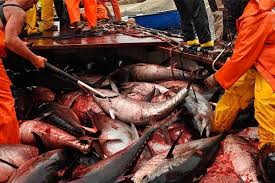This article will discuss the legal and institutional framework for Fisheries Environmental Impact Assessment (FEIA). The provision for FEIA may be made through legislation, administrative order, or policy directive.
Many countries have now enacted some type of EIA legislation, which generally can be classified into either a comprehensive or enabling statute. Clear and specific legal provisions are internationally accepted as the most appropriate basis for EIA. In many cases, regulations (mandatory rules) and procedural guidance (advisory interpretation) elaborate on how EIA legislation is to be implemented.
Read Also: Blackleg (cruciferous plants): Description, Damages Caused, Control and Preventive Measures
The Legal and Institutional Framework for Fisheries Environmental Impact Assessment in Nigeria

Nigeria has developed its legislative framework for environmental management over a number of years and was one of the first African countries to give significant emphasis to specialized environmental institutions.
The Federal Environment Protection Agency (FEPA) Act of 1988 and the principle of environmental protection were enshrined in the Federal Constitution of 1999, which contains provisions for the protection and improvement of the environment and the safeguarding of Nigeria’s water, air, land, forests, and wildlife (Makinde and Ayanbule, 2006). According to Anago (2002), Nigeria’s National Policy on Environment sets out the following goals:
- Securing the quality of the environment for health and well-being;
- Conserving and using the environment and natural resources for the benefit of present and future generations;
- Restoring, maintaining, and enhancing ecosystems and ecological processes essential for the functioning of the biosphere to preserve biological diversity and the principle of optimum sustainable yield in the use of natural resources;
- Promoting public awareness of the link between development and the environment;
- Cooperation with countries and international organizations in the protection of the environment.
Environmental Laws Relevant to Fisheries Environmental Impact Assessment
The Federal Government of Nigeria has promulgated various laws and regulations to safeguard the environment, including those relevant to EIA in fisheries and aquaculture, although some statutes overlap with those focused mainly on the oil industry. These include:
- Federal Environmental Protection Agency Act of 1988 (FEPA Act). The following regulations were made pursuant to the FEPA Act:
i. National Environmental Protection (Effluent Limitation) Regulations;
ii. National Environmental Protection (Pollution Abatement in Industries and Facilities Generating Wastes) Regulations;
iii. National Environmental Protection (Management of Solid and Hazardous Wastes) Regulations.
- Environmental Impact Assessment Act of 1992 (EIA Act).
- Harmful Wastes (Special Criminal Provisions, etc.) Act of 1988 (Harmful Wastes Act).
- National Environmental Standards and Regulations Enforcement Agency Act 2007 (NESREA Act).
Read Also: 17 Medicinal Health Benefits Of Lotus Seed (Nelumbo nucifera)
State-Level Environmental Protection Laws in Nigeria

The different states within Nigeria also have the authority to make laws to protect the environment within their respective jurisdictions. For example, the Environmental Protection Agency Law Cap 47 and Cap L23, Laws of Akwa Ibom and Lagos States of Nigeria (2000 and 2003), are specific state-level statutes.
Nigeria has extensive statutory instruments in place to implement and enforce many aspects of environmental management. The Environmental Impact Assessment Act of 1992 is a key statute in this regard (FAO, 2006-2008 NALO Nigeria).
Nigeria’s International Environmental Commitments Affecting Fisheries EIA
Nigeria is also committed to a wide range of international environmental and biodiversity agreements, which may affect decision-making processes for aquaculture development in general, as well as specific aspects of Fisheries Environmental Impact Assessment (Anago, 2002).
In this article, the legal and institutional framework for Fisheries Environmental Impact Assessment and the main features of EIA legal and institutional frameworks have been discussed.
Do you have any questions, suggestions, or contributions? If so, please feel free to use the comment box below to share your thoughts. We also encourage you to kindly share this information with others who might benefit from it. Since we can’t reach everyone at once, we truly appreciate your help in spreading the word. Thank you so much for your support and for sharing!

